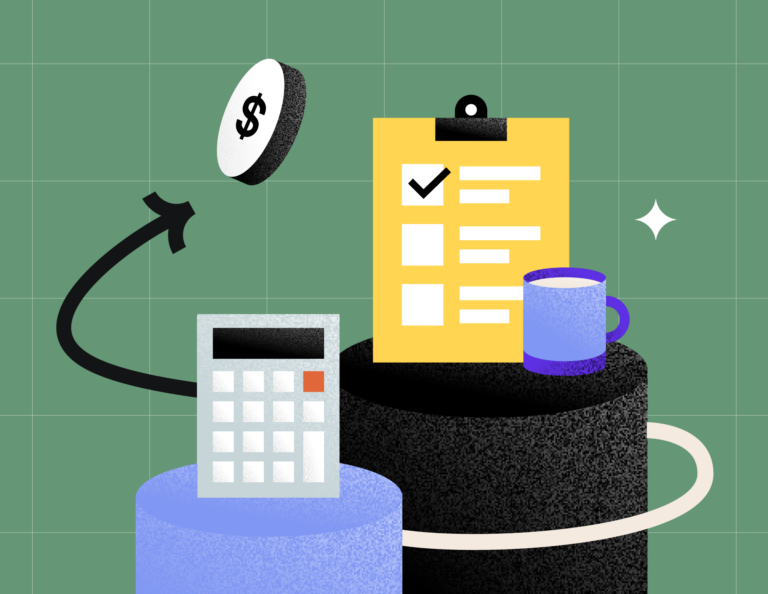Pricing is a balancing act: Learn how to price your photography business in this article by understanding photography costs, pricing strategies. and pricing models to help you set your prices and scale them without the guesswork.

Running a photography business also means performing the balancing act called pricing. You can experiment until you find a sweet spot that works for you and your clients, but what you really need to move forward is more concrete action and maybe a little advice from experienced professionals. Once you unlock the right strategy for pricing your business, you can start to grow your photography business as well.
Consider this your comprehensive photography pricing guide. We’ll walk you through how to understand the photography costs you shoulder and explore pricing strategies you can use for your business. You can also base your rates on existing pricing models.
Jump to:
- Photography costs
- Pricing strategies for photographers
- Pricing models for photographers
- Using HoneyBook for your photography business
Photography costs
Start with expenses. If you’re looking for a concrete foundation, your costs are a solid base.
“You need to decide your cost of doing business first, so you know how much you are paying for things, how much would you like to make, and how you price things to make that happen,” says experienced photographer and business owner Tyler Hobbs. “Think about how much are you worth in comparison to other jobs, and if you’re happy with making that much.”
Photographer and HoneyBook Pro Jenn Bays also suggests thoroughly reviewing all your costs, from software that may have monthly fees to your hardware and, of course, your computer.
Create a pricing structure that allows you to pay yourself, pay your taxes, invest back into your business and education, and save,” Bays recommends. “This will look a lot different from your competitors, and that’s okay! – Jenn Bays
You’ll want to look at:
- Camera equipment: Camera equipment costs start with the purchase price and extend to maintenance and repair costs. You’ll also want to factor in accessories, replacements, upgrades, and similar expenses. The cost of equipment varies depending on your type of photography.
For example, high-end DSLR cameras and lenses and pricey lighting equipment for a wedding shoot may not be needed for landscape or still-life photography. Additional considerations, such as a secondary shooter, would also need to be assessed on a case-by-case basis.
- Film and development: Your second major cost will probably be film and development, particularly film stock and lab services, not to mention additional hardware or software costs.
- Overhead: Overhead can account for miscellaneous expenses and the cost of time spent on the work, but you can also categorize that separately (e.g., by putting it under the film and development category).
Overhead would include website hosting fees, advertising and marketing expenses, and office supplies. Other hardware costs (laptops and desktops) can also be considered overhead. As for billing for time spent post-processing, that can be determined by factoring in the cost of the hardware and software and the photographer’s hourly rate.

Pro Tip: Some finer points of pricing calculation might be tricky, such as distributing costs like a new laptop. You can distribute such costs by raising your overall rates by the price of the new equipment, or you can absorb the cost without changes.
If you raise prices, you can offset it for certain clients by creating a discount package if they book a certain number of hours or sessions.
Pricing strategies for photographers
Before we dive into a photography pricing list, take some advice from photographer and business owner Kristen Pierce to heart: “Don’t be the cheap photographer! It’ll be harder to make a living that way, and you’ll burn out. The more you can provide your clients with a personal experience and well-defined pricing structure, the more comfortable they are going to feel.”
Racing to the bottom is a guaranteed way to exit the industry. Instead, setting your prices with a solid strategy can be even more helpful for promoting your photography business. Having established that, let’s delve into some pricing strategies.
Don’t be the cheap photographer! It’ll be harder to make a living that way, and you’ll burn out. The more you can provide your clients with a personal experience and well-defined pricing structure, the more comfortable they are going to feel. – Kristen Pierce
Hourly pricing
Hourly pricing is ideal for photography projects that you can complete relatively quickly. They’re also valuable when the client is interested in purchasing a certain number of finished products.
For example, an engagement portrait session may require only one or two hours of your time, and the client may want just a couple of prints. In this case, hourly pricing would be more advantageous than a flat rate.
When determining your hourly rate, consider your experience, the difficulty of the project, your overhead costs, and the final desired product. A simple family portrait might take about an hour of shooting, while a wedding usually requires six or more hours. Make sure to factor in additional editing and delivery time when quoting your client a price.
Give your client a rough estimate of how long the project will take. This allows them to budget for your services and not be surprised by unexpected increases in the final price. Also, keep detailed records of time spent on each project so that you can justify your charges if necessary.
Flat rates
Another option is to charge by the project, or what’s known as a flat rate. Agree on a fee upfront that covers everything from the initial consultation to the delivery of final prints or digital files. This price will be based on your estimates for the time and materials needed to complete the project.
Flat photography rates can be helpful if you’re just starting out because they give you and your client some certainty about the final bill. Once you have more experience, beware of underestimating your time and materials to win projects at cut-rate prices.
If you’re a new freelance photographer or dabble in many different photography genres, per-project pricing might be the best way to go. You can tailor your fee to each project based on your estimate of how long it will take and what materials you’ll need.
Be clear about what is and isn’t included in your fee: e.g., digital files versus prints, retouching, and post-processing services. Be as specific as possible in your estimates to avoid unpleasant surprises for either you or your client.
Custom pricing
Custom pricing for photography services can vary depending on several factors, such as the type of event, the number of prints or digital images requested, and any special editing or printing requests.
Custom options are ideal for photography businesses that cater to a variety of clients with different needs. It allows businesses to tailor their services and fees to each client, providing a more personalized experience.
With custom pricing, it’s especially important to list what goes into your pricing. Make sure to itemize any extra costs that may be incurred, such as travel fees or charges for additional prints, to avoid any misunderstandings later on.
Pricing models for photographers
While pricing strategies help you figure out how to charge your clients, pricing models help you position your company in the market and determine how you want to make a profit. Here are three pricing models that are common for photographers.
Penetration pricing
If you are a new photographer trying to break into the industry, you may want to consider penetration pricing: setting your prices low to attract new clients and gain market share. Once you have established yourself and built a loyal client base, you can gradually raise prices.
Make sure your prices are still high enough to cover your expenses and make a profit, or you will not be able to sustain your business in the long run. Additionally, plot a clear plan for how and when to raise prices once you have established yourself in the market. Otherwise, you risk alienating your loyal clients, who may feel like this is price-gouging.
Cost-plus pricing
Cost-plus pricing is when businesses charge a base price for their services plus an additional amount to cover their costs. This allows you to recoup operational expenses while also making a profit.
There are a few key things to keep in mind when using cost-plus pricing:
- Accurately calculate your costs before setting your prices. This includes all the direct and indirect costs associated with providing your services.
- Add a reasonable profit margin to arrive at your final price. A good rule of thumb is to add 20%-30% to your total costs.
- Get feedback from clients on the perceived value of your services before finalizing prices — this helps you avoid undercharging or overcharging.
- Be prepared to adjust your prices as your costs change over time. This is particularly important if you use a cost-plus pricing strategy, as it will guarantee you are still making a profit even as your costs increase.
Competitive pricing
Consider what the local market will bear and price your services competitively to attract clients and ensure a profit. You can start by researching what similar businesses in the area are charging for similar services to find the right price point.
Keep track of your operating costs, including the cost of equipment and any assistants you may need. You’ll also want to consider whether you offer discounts for bulk bookings or if you’re willing to negotiate on price.
Running a successful photography business is as much about experience as it is about expertise. Wedding photographer and business coach Sandra Yvonne says, “Do the work to figure out what your numbers are — your expenses, your future financial goals, what you need/want to pay yourself. Then, use that information to set your prices. You’ll have a much easier time than just setting prices based on what everyone else is charging, and you’ll feel much more confident in what you’re offering!”
Your photography business can soar with HoneyBook
We know that to be successful in any service-based industry — especially when you’re deeply involved in people’s lifelong memories — providing excellent client experiences is key. That’s why we’re committed to helping you manage your entire clientflow professionally and efficiently.
With HoneyBook, you can do everything from capturing leads, booking new clients, building a client onboarding process, and much more. Send a contract and photography invoice at the same time, and once your client signs and pays, they’ll automatically receive a welcome packet complete with an intro video, photo shoot project details, and a calendar link!
No matter how you run your business, you can build it in HoneyBook with endless customizations and the business photography tools that you need.
Try the best clientflow platform for photographers
Manage everything from scheduling, booking, payments, onboarding, and much more.
Start free trial


